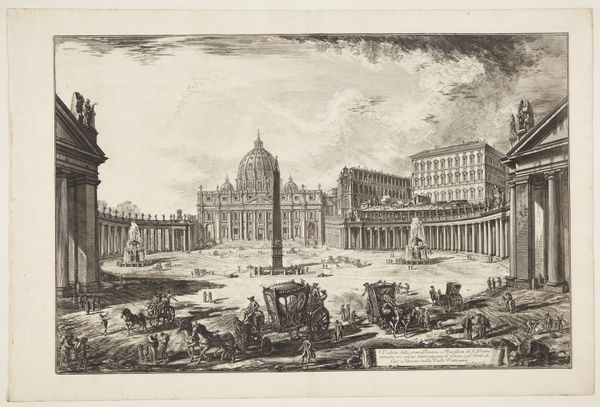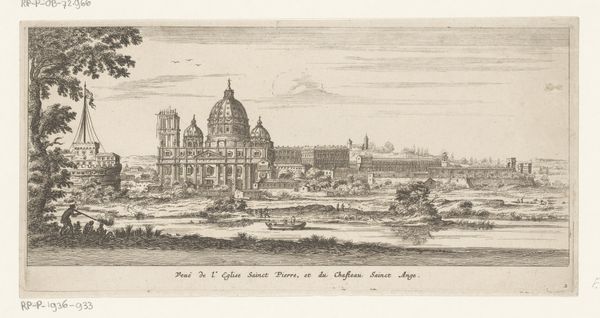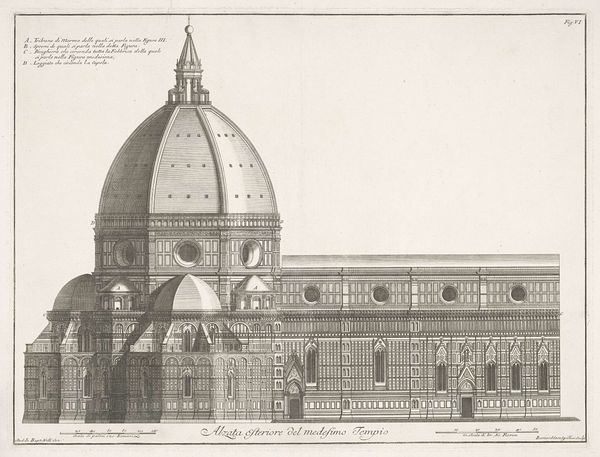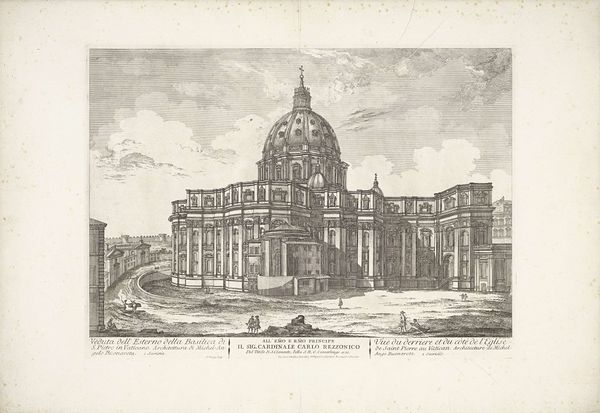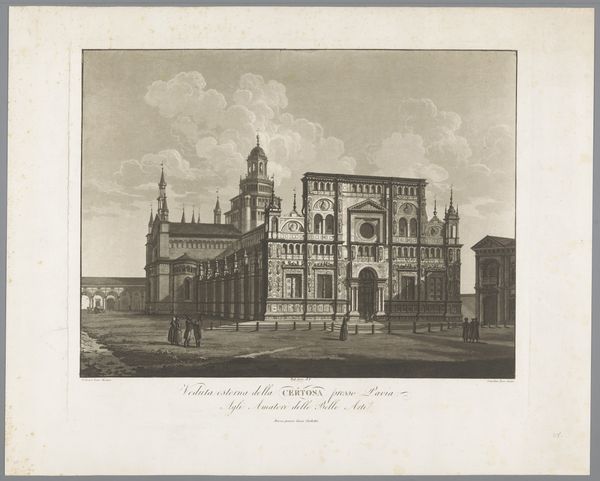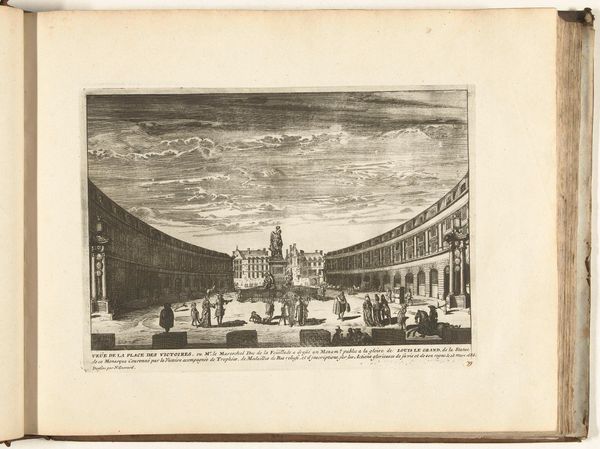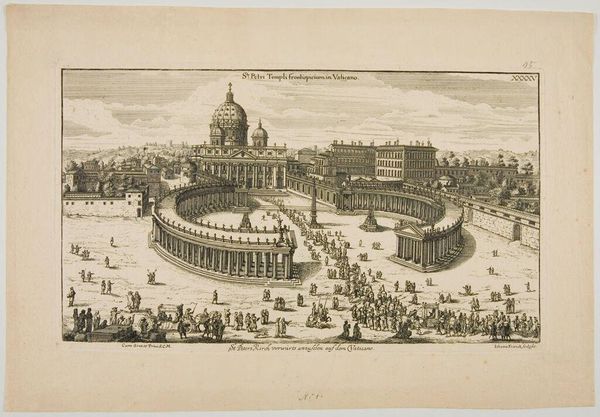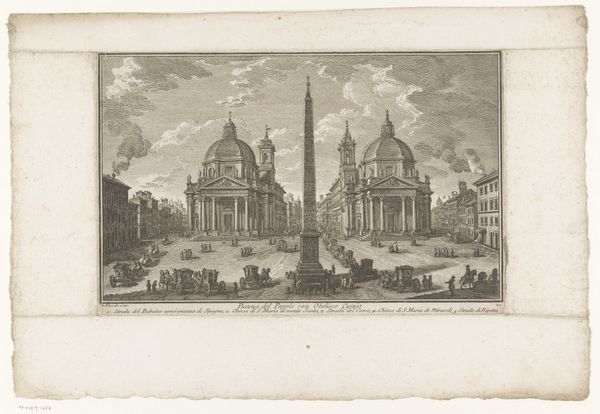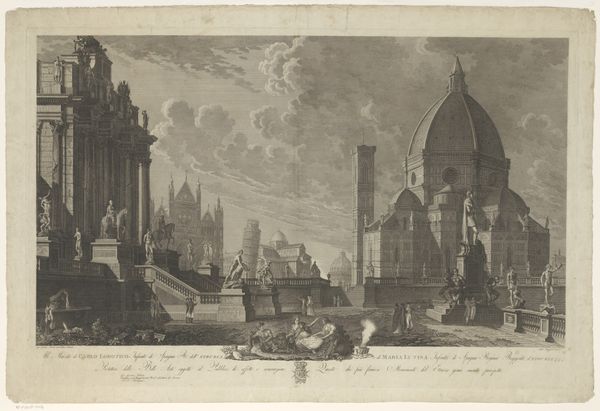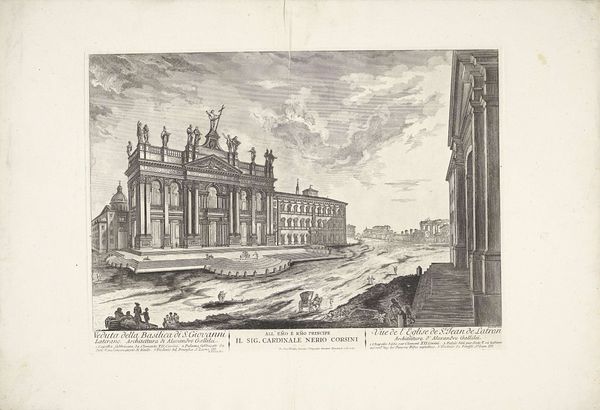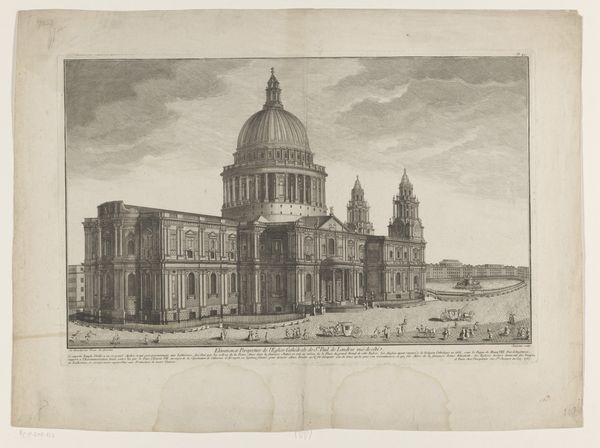
General View of the Piazza of the Duomo of Pisa c. 19th century
0:00
0:00
Copyright: CC0 1.0
Curator: We’re looking at Raniero Grassi's "General View of the Piazza of the Duomo of Pisa," held at the Harvard Art Museums. It is a lovely black-and-white print. Editor: It feels so still, almost dreamlike. Like a memory fading into the paper. The contrast makes the architecture both imposing and fragile. Curator: The Piazza del Duomo, a UNESCO World Heritage site, represents a concentration of medieval sacred architecture, but what can we interpret about access and power in this particular representation of it? Editor: The figures are so small, they feel like afterthoughts, as if the architecture is meant to dwarf them. It's like a stage set designed to impress rather than include. Curator: Indeed. The placement of the Leaning Tower, for instance, reinforces a visual language of authority, even in its apparent imperfection. We must question what this symbolizes. Editor: I wonder, did Grassi mean for us to feel this tension, or was it simply the aesthetic of his time? Curator: Perhaps both. Art often reflects and reinforces the social structures in which it's created. The Piazza becomes a symbol of institutional power. Editor: It makes you think about what it means to monumentalize something, and who gets to decide what becomes a monument. Curator: Precisely. It reminds us to look critically at the histories encoded in these spaces. Editor: Well, I will never look at Pisa in quite the same way again!
Comments
No comments
Be the first to comment and join the conversation on the ultimate creative platform.
